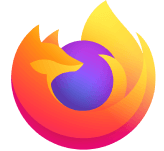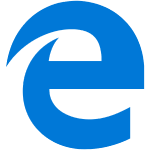Fill out the form to get more information about the Fullstack Academy bootcamp of your choice.
05.21.2024
The Web Developer Resume Hiring Managers Actually Want to See
By Fullstack Academy's Career Success Team

Last Updated on May 2024
The U.S. Bureau of Labor Statistics (BLS) projects a 23% rise in demand for web developers by 2031—much higher than the 6-8% average for all occupations. With such high demand, you may be wondering how you can kickstart a lucrative career as a developer.
Whether you are a seasoned programmer or on the hunt for your first job, this article will help you craft a professional developer resume tailored to your unique software engineering career goals.
Careers in Web Development
In order to craft an effective web development resume, you first need to understand the different types of developers. There are typically three types of web developers, each requiring a specific skill set:
Front-end web developers build an application’s user experience to deliver information to site visitors quickly, effectively, and aesthetically.
A back-end web developer builds and maintains the technology that powers those user-facing components, as well as implements code that helps browsers communicate with, store, and understand data from databases.
Full stack web developers work in the back-end and front-end—meaning they engineer both client-facing and server-side software.
Web developers can also work in many different roles and industries, including UX/UI design, mobile development, and game development. Understanding the various career paths will help you better tailor your resume and align your skills to your ideal role.
Why Do I Need a Resume?
Once you’ve received the proper training, the next step is to represent your qualifications in a properly structured web developer resume. On average, recruiters spend only 6 to 10 seconds scanning a resume before they decide whether it stays or goes. That’s why some developers, especially those who have experience with various programming languages, prefer to rely strongly on network connections to find their next job.
In the world of computer science, web designers and developers do often find employment through referrals, and having held the job title of front-end or back-end developer certainly boosts your marketability even without a resume to go with it. That’s why industry-specific professional relationship-building is a core skill set taught to bootcamp students by the Career Success team at Fullstack Academy.
That said, prospective web developers should continue to practice persistent, active applying with an optimized resume. Putting your best foot forward involves creating positive connections and simultaneously pitching your credentials with a resume.
Ready to build your resume? Let’s do it.
Ready to break into tech?
Learn the #1 programming language in 13 to 22 weeks with our live online coding bootcamp.
Web Developer Resume Formatting and Styling
As mentioned above, recruiters typically give your resume a mere 6-to 7-second once-over, especially if there are many applicants. If your formatting is off, they might spend even less time.
Readability is the key to preventing this. Especially as a developer, you can ensure that your resume doubles as a sampling of your skills for the job with pertinent information communicated clearly and efficiently.
You can also demonstrate user-experience best practices by applying proven design principles to your resume’s aesthetic.
Best Practices
Use proper spacing
Use white space to make it easier to identify important information
Use page breaks, bolding, and bullet points
Italicize key data points in your job descriptions
Bring attention to your major contributions by bolding select phrases
Be careful when using color—less is often more, and a limited palette improves accessibility for readers (including computers!)
Use hyperlinks intentionally to showcase projects, presentations, and article publications
You should also be aware of the difference between a Curriculum Vitae (CV) and a resume. A CV is usually two or more pages long and goes into great detail on educational as well as professional achievements.
A resume, the preferred document for most U.S. companies, highlights only the most important career-relevant achievements. In most cases, a resume should only be 1 page long. However, for experienced professionals, a resume may span two pages. It’s important to tailor your resume to each role you apply for.
Note: While a well-designed resume can appeal to a recruiter’s eye, it may not work well with applicant-tracking systems–the online screeners that scan your resume based on keywords. When applying through an ATS, you will want to use plain text, preferably Microsoft, PDF, or pure text resume version.
You should also have an online version of your resume. This way you can provide links to project demos, repositories, LinkedIn, and your social media.
The Components of a Web Developer Resume
Career Summary
While not a requirement, a career summary can be valuable for individuals who want to provide more clarity about their background and goals. Use a professional developer summary to briefly introduce your technical skills, soft skills, interests, and work experience. Here’s a sample from a resume:
PROFESSIONAL SUMMARY
Passionate fullstack web developer with 3 years of experience, building RESTful APIs for EdTech companies with an emphasis on maintainability and scale. Proficient in Node, SQL, and GraphQL.
If you’re just starting out, try incorporating your educational background in this section.
Remember to limit your summary to three sentences or less. The details of your experience will come in the rest of the resume.
Technical Skills
We recommend leading with a technical skills section to draw the eyes of recruiters and rank well for keywords recruiters and their recruiting software are searching for.
For example, while you may be searching for a certain job title in a specific location, hiring managers are likewise searching for developers with a particular skill set of programming languages. This is the place to show search engine recruiters that you’re a match.
Keep this section to a simple list using spacing and possibly bullet points. It should look something like this:
TECHNICAL SKILLS
Front-end: Javascript, jQuery, HTML5, CSS3, Sass Bootstrap, WordPress, AngularJS
Back-end: Python, PHP, Java, WordPress plugins
Other: Ajax, Git, GitHub, CMS, SQ
You may also list your skills based on competency:
Proficient: Javascript, jQuery, HTML5, CSS3, Sass Bootstrap, WordPress, AngularJS
Experienced: Python, PHP, Java, Wordpress plugins
Familiar: Ajax, Git, GitHub, CMS, SQ
Work Experience
Here is where to consider listing any experience relevant to computer science and web development—even if it’s just a volunteer or personal.
Make sure to include your previous employers, the length of each position, tasks performed, and quantifiable accomplishments in a clear and concise way.
If you don’t have relevant paid or volunteer experience, replace this section with a “projects” section, which we’ll describe below.
Here’s a strong experience section from a full stack developer resume.
WORK EXPERIENCE
Full Stack Software Developer - Barnyard Software - 6/2018–Present
- Assisted in designing and development of applications according to design specifications
- Developed scalable strategies for collecting data and delivering timely and efficient solutions
- Created, maintained, and enforced front-end and back-end code and documentation
Projects
The projects section could include freelance projects, passion projects, group or individual open-source projects, or a combination of all three.
Here’s where having an online version of your resume pays off. This is a great opportunity to share links to demos and GitHub documentation of your projects instead of simply describing them. Remember: make sure your documentation is both succinct and comprehensive.
For open-source, this means following GitHub READMEs and Wikis. For passion projects, be sure to write your own documentation. And if you’re unable to share quality documentation, it’s better to leave a project out of your resume.
Don’t forget to make your documentation publicly viewable, so that recruiters are able to see all the exciting projects you’ve worked on.
Here is an example of a project to share on your resume:
Here’s a strong experience section from a full stack developer resume.
TECHNICAL PROJECTS
Learning & Collaboration | Lead Fullstack Engineer | www.sampleapp.com | Github Source | 03/20
Built a customizable online classroom enabling users to tailor the learning environment to subject matter needs.
- Implemented intuitive user experience with React and Twilio
- Produced a robust, real-time updating back-end with Firebase, Node.js, Express
- Project built through Agile Development, including daily meetings with 3 collaborators and daily action item tracking via Waffle
- Contributions include but are not limited to video chat feature and main page image carousel using Twilio and jQuery
- Wrote unit tests using Jest with over 90% test coverage to ensure the application does not break in production
Remember, your projects and work experiences are not meant to stand alone and vouch for you. They should act as guides to tell your story and illustrate your value.
With your descriptions, you are highlighting how you can identify needs, demonstrate creativity, and solve problems: all essential abilities in developers.
Education
Think carefully about where you want to place the education section on your web developer resume.
If you’ve worked for multiple companies over a number of years, your experience will be more relevant than your education. However, if your experience is thin and a degree in computer science is your primary qualification, it may be better to shift the education section to the top of your resume.
In the education section, list your institution, degree, dates of attendance, GPA, and awards, if applicable. If you don’t have a degree but have completed a coding bootcamp or other certification, you can list it here. Having a diverse educational background helps you stand out in the job market—use your background to your advantage.
EDUCATION
Bachelor of Arts in Mass Communication | 2012–2016
Louisiana State University
GPA: 3.8, magna cum laude
It’s important to note that you can account for partial education, as well. If you’ve earned some credits but didn’t receive a degree, you likely have relevant coursework you can highlight. Here’s an example of how to highlight partial education:
Bachelor of Arts in Mass Communication | 40 Credits
Louisiana State University
Contact Information
This section should be prominently positioned at the top of your resume. Include your full name, professional email address (avoid using nicknames or informal addresses), and phone number (optional). Ensure this information is accurate and professional.
Here’s an example of how your contact information could be added to your resume.
CONTACT INFORMATION
jane.smith123@gmail.com
(555) 555-5555
LinkedIn: https://www.linkedin.com/jane-...
Ready to break into tech?
Learn the #1 programming language in 13 to 22 weeks with our live online coding bootcamp.
Additional Information To Include in Your Resume
While your core skills and experience form the foundation of your resume, the following additions can provide context, and help you to stand out from the crowd. Here's a look at some valuable inclusions:
Awards & Certifications
Academic Awards: Highlighting academic achievements in computer science or related fields demonstrates your dedication and potential.
Industry Certifications: Earning industry-recognized certifications (e.g., CompTIA certifications, Microsoft certifications) validates your skills and commitment to professional development.
Participation in Hackathons or Coding Competitions: Showcasing your ability to work under pressure and demonstrate creative problem-solving in a competitive environment can set you apart.
Interests & Hobbies
Relevant Hobbies: Do you enjoy building personal projects, participating in open-source communities, or attending tech conferences? These activities show you’re passionate about web development and continuous learning.
Team-Oriented Activities: Team sports or volunteering experiences demonstrate your ability to collaborate effectively with others, a crucial skill for any web developer.
When including additional information, ensure it's relevant to the web development field and provides valuable insights into your skills and personality.
How to Make Your Web Developer Work Experience Stand Out?
For web developers with experience, this section is your opportunity to shine. Be sure to touch on your accomplishments, project or team impact, and technical capabilities alike. Here's how to make your work experience stand out:
Focus on Achievements: Highlight accomplishments, not just responsibilities. Quantify results using metrics. Did you increase website traffic? Reduce development time? Showcase your impact!
Use Action Words: Replace generic verbs like "responsible for" with strong action verbs like "developed," "implemented," or "optimized." This demonstrates initiative and ownership.
Highlight Technical Expertise: Mention specific technologies used (languages, frameworks, tools) in each project. This showcases your technical depth and aligns your skills with the job requirements.
Tailor Your Work Experience to Each Job: Highlight achievements relevant to the specific role. Demonstrate how your prior experience can address their challenges.
By following these steps, you can transform your work experience section from a list of duties to a compelling narrative that portrays your value as a web developer.
Web Developer Resume for Freshers with No Work Experience
If you are an aspiring web developer with no prior work experience, crafting a web developer resume can feel like a daunting task. However, a well-crafted resume showcasing your technical and interpersonal skills can often make up for a lack of on-the-job experience by highlighting your unique potential. Here's how to craft a standout resume as a prospective web developer:
Focus on Skills and Education: Highlight your proficiency in relevant programming languages (HTML, CSS, JavaScript), frameworks (React, Angular), and tools (Git, version control). Academic achievements, specialized coursework and certifications, and personal projects demonstrate your dedication and learning ability.
Quantify Your Achievements (Even in Projects): Did you build a personal website? Mention it! Quantify the impact wherever possible. For example, "Developed a responsive e-commerce website that increased mobile traffic by 20%."
Highlight Relevant Soft Skills: Communication, teamwork, problem-solving, and time management are crucial for web developers. Demonstrate these skills through volunteer work, extracurricular activities, or even online courses.
Tailor Your Resume to Each Job: Carefully review the job description and tailor your resume to showcase the specific skills and experience they seek.
By implementing these strategies, you can craft a strong resume that convinces hiring managers you possess the potential to thrive as a web developer in the right web development role.
Top Skills To Add To a Web Developer Resume
A concise resume is valuable real estate, so it's crucial to prioritize the skills that make you a strong web developer candidate. Here's a breakdown of the top skills to highlight, categorized into three key areas:
Programming Languages
Front-End Languages: These are the building blocks users see and interact with. Proficiency in HTML, CSS, and JavaScript is essential. Consider including frameworks like React, Angular, or Vue.js for added value.
Back-End Languages: Languages like Python, Java, or PHP are often used to manage server-side logic and database interactions.
Additional Languages: Depending on your specialization, knowledge of languages like C++, Swift, or Kotlin can be advantageous.
Technical Skills
Version Control Systems: Git is the industry standard for version control. Proficiency in Git showcases your ability to collaborate effectively on projects.
Databases: Understanding how to store and manage data is a critical component of the job, so familiarity with SQL databases like MySQL or PostgreSQL should be highlighted.
APIs and Integrations: Web applications often interact with external services. Demonstrate your experience with working with APIs and integrating them into your projects.
Deployment and Troubleshooting: Knowing how to deploy websites and troubleshoot any issues that arise demonstrates professionalism.
Soft Skills
Don't underestimate the importance of soft skills! These skills are essential for success in any team environment.
Communication: Being able to clearly communicate technical concepts, both verbally and in writing, is crucial for collaboration.
Problem-Solving: Web development is all about tackling challenges and finding creative solutions, which involves a high degree of analytical and critical thinking skills.
Teamwork: The ability to work effectively with others, contribute to discussions, and provide and receive feedback is essential for project success.
Time Management: Meeting deadlines and managing your time effectively is a key skill for any developer.
By highlighting this comprehensive range of skills, you can create a compelling resume that showcases the technical and soft skills required for success in the web development field.
Ready to break into tech?
Learn the #1 programming language in 13 to 22 weeks with our live online coding bootcamp.
Tips For Writing A Resume As A Web Developer
Now that you understand the key components and additional sections to consider, here are some practical tips to craft a web developer resume that gets noticed:
Tailor Your Resume: Don't rely on a generic template. Analyze each job description and tailor your skills and experience to their specific needs.
Focus on Keywords: Integrate relevant keywords from the job description throughout your resume. This helps Applicant Tracking Systems (ATS) find you!
Keep it Concise and Scannable: Keep it to one page (two for senior roles). Use clear headings, bullet points, and white space to make it easy for recruiters to find your key skills in seconds.
Quantify Your Achievements: Whenever possible, quantify your accomplishments using metrics. Did you increase website traffic? Reduce loading times? Highlight these achievements with data to showcase your value.
Proofread and Edit: Proofread meticulously and consider having someone else review your resume for any errors.
By following these tips, you can craft a web developer resume that grabs attention, highlights your qualifications, and positions you for success!
Resume Ready
Now you know the six core sections you need to include in your web developer resume to impress hiring managers. To recap, make sure your resume has:
Professional Summary
Technical Skills
Work Experience
Projects
Education
Contact Information
Remember: Projects can be substituted for work experience, and education can be moved to the top of your resume if you lack professional experience.
Of course, a professional resume is just a start. You’ll also need a tailored cover letter for each job application and an online web development portfolio showcasing your best work.
Include a Cover Letter With Your Resume
While your resume lays out your skills and experience, a cover letter is your chance to personalize your application and make a strong first impression. In a compelling cover letter, you can:
Briefly highlight your most relevant skills and experience for the specific job.
Showcase your enthusiasm for the company and the role.
Hint at why you're a perfect fit for their team.
A well-written cover letter demonstrates your professionalism and initiative, potentially setting you apart from other applicants who rely solely on their resume. Consider it a handshake in the digital world—a chance to introduce yourself and showcase your interest in a way that a resume alone can't.
Want to give yourself a leg up in the web development field? Consider additional training at Fullstack Academy.


